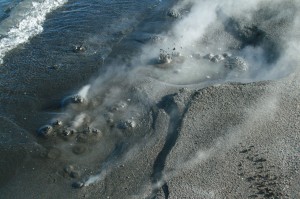Here is a short update on what did go on in Iceland over the Christmas. In all there where few earthquakes in Iceland during Christmas. The main reason for this was a major storm that started in south Iceland on the 25th of December, it lasted until 27th of December in some parts of Iceland. The wind was topping 47m/s in strong winds. But the average wind speed was about 32m/s I think.
Around 17:02 UTC on the 25th of December there was a ML2.77 earthquake in Krísuvík volcano. Far as I can tell by the wave form this earthquake was mostly tectonic in nature. But it is impossible to know if the main source of this earthquake was the magma that is collecting in Krísuvík volcano or not. But activity continues in Krísuvík volcano as it has been doing in the last few weeks before. This earthquake was followed by 20 or so smaller earthquakes in the same area.
Due to the strong storm there where few to no earthquakes recorded on the late 25th to 27th of December. But the storm did simply hide all the minor earthquake that might have been taking place.
The ML2.77 earthquake in Krísuvík at 17:02 UTC at Heklubyggð geophone station. The storm noise almost drowns out the earthquake signal. This plot is filtered at 4Hz as a cut off frequency.
The ML2.77 earthquake in Krísuvík at 17:02 UTC at Hvammstangi geophone station. A normal level of noise can be seen both sides of the earthquake. No storm noise is presented in this plot, as it had not started in north of Iceland at this time.
A few deep earthquakes where seen in Eyjafjallajökull volcano over the same period. At current it is hard to know what they mean in the long term. But it is clear that Eyjafjallajökull volcano continues to make a little rumble and has not quieted down at current time.

















